BIOL10008: Origins and consequences of multicellularity
1/12
Earn XP
Description and Tags
Concept 19
Name | Mastery | Learn | Test | Matching | Spaced |
|---|
No study sessions yet.
13 Terms
List two ways that scientists have used to estimate when multicellularity evolved. Explain both these approaches and their limitations.
Fossil Evidence - provides evidence for eukaryote emergence, but not divergence
Molecular Clocks - estimates the time when two or more life forms diverged, based on mutation rates in DNA
Combining the data with fossil records suggest multicellularity arose 6 times
With reference to Volvocine green algae describe and explain the hypothesis that scientists have for evolution of multicellularity in this group
Transition may have occurred in these steps:
Aggregation of cells into a cluster - single celled Chlamydomonas, cluster of cells - gonium, larger cluster of cells - Pandorina
Intercellular communication within the cluster
Specialization of some cells within the cluster (seen in pleodorina - large cluster of cells containing somatic and reproductive cells)
Organization of specialized cells into groups (tissues), seen in volvox - larger cluster of cells with somatic and reproductive cells organised into separate tissues
Transition also results in individual cells loosing the ability to live independently
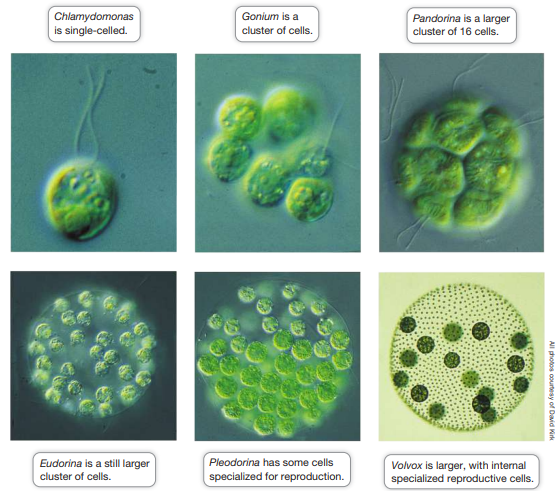
Describe the benefits of multicellularity to organisms.
Enables organisms to dedicate their energy to one task rather than multiple, increasing efficiency
Functional specialisation - cells work in unison and perform specialised tasks
Describe diffusion and osmosis
Diffusion - substance diffuses from area from high conc. to an area of low concentration, down their concentration gradient until an equilibrium is reached
Osmosis - Diffusion of water across a selectively permeable membrane (low conc of solute to higher)
Describe hypertonic, isotonic and hypotonic solutions with respect to animal and plant cells
Hypertonic - solute concentration is higher than the solute concentration inside the cell, net flow of water out of the cell, and the cell volume will decrease, shrinking and becoming shrivelled or plasmolysed (plant)
Isotonic - solute concentration is the same as the solute concentration inside the cell, there will be no net flow of water into or out of the cell, and the cell’s volume will remain stable or flaccid (plants)
Hypotonic - solute concentration is lower than the solute concentration inside the cell, there will be a net flow of water into the cell, and the cell volume will increase, cell becomes lysed or turgid (plants)
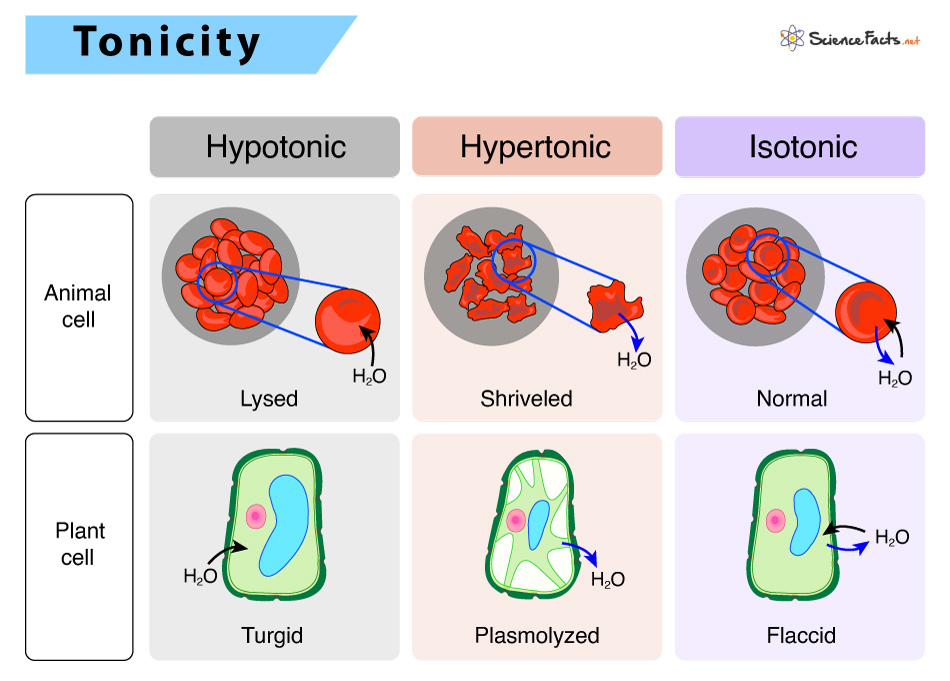
What is water potential?
The tendency of a solution and its solutes to take up water from pure water across a selectively permeable membrane
Expressed in MPA
Water always moves across a selectively permeable membrane towards regions of lower (more negative) water potential
The lower the water potential, the greater the driving force for water movement across the membrane
What are the two components of water potential?
Ψ = Ψs + Ψp
Solute potential (Ψs):
as solutes added, the tendency to take up water increases, resulting in a decreased Ψs
Greater concentration of solutes = the lower the water potential
is usually negative
Pressure potential (Ψp):
the greater the internal pressure, the higher the water potential
usually positive
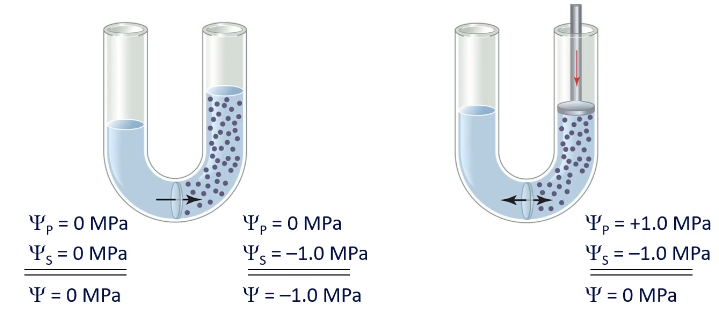
What is the impact of low turgor pressure on water potential in plant cells?
Low turgor pressure (low internal pressure):
water enters through osmosis due to a low solute potential
Overall there is more negative water potential in the cell compared to the external water potential
Water movement increases until turgor pressure increases and reaches a point where it exactly balances the solute potential - results in no net flow of water in/out of cell

Explain what happens to the surface area to volume ratio as an organism increases in size.
As the volume of an organism increases, the SA:V ratio decreases
Organisms require higher SA:V ratios since exchange with the external environment is required in an organism’s metabolism
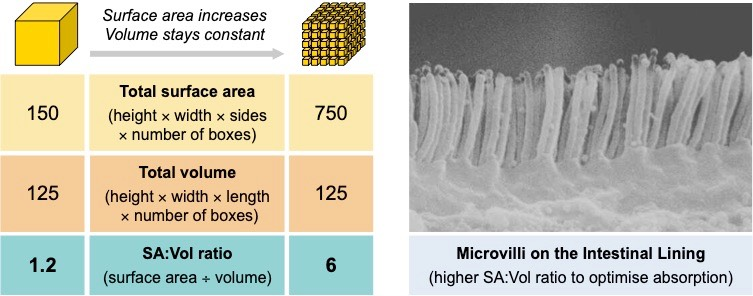
List limitations in exchange for organisms. Describe ways that organisms have evolved to deal with the surface area to volume problem
Diffusion with external environment cannot meet the exchange needs of the organism
SA:V ratio is small
Distance of internal cells to external environment is large
Evolution of internal aqueous environment (extracellular fluid) helps cells meet exchange needs (diffusion of gases and wastes), specialised cells create internal environment, conditions kept stable by homeostasis
Evolution of circulatory system facilitates movement of extracellular fluid around the body to ensure exchanged substances reach cells of the body, this maintains high concentration gradients for diffusion and ensures that exchange occurs at max rate

How is a high level of metabolism maintained in large organisms?
highly branched internal transport systems
rapid movement of exchange substances
force required to more substances through transport system (active or passive)
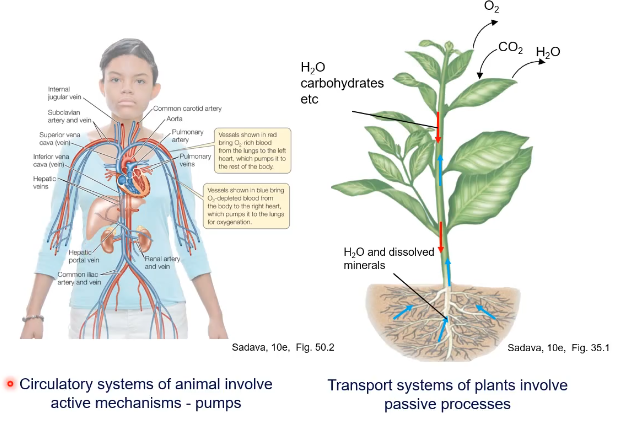
What is an exchange surface?
Groups of cells with a function to exchange with the external environment
have a large surface area - flat, long, folded and branched
thin surface with small diffusion distances
Ex: body surface, internal and external gills, tracheae, lungs, stomata in leaves
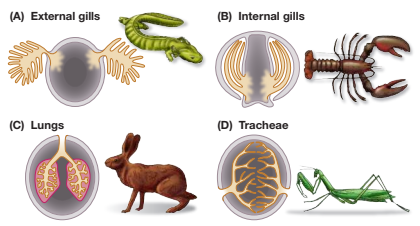
What is Fick’s law of diffusion?
Rate of diffusion =
(SA * partial pressure gradient * diffusion coefficient)/diffusion distance